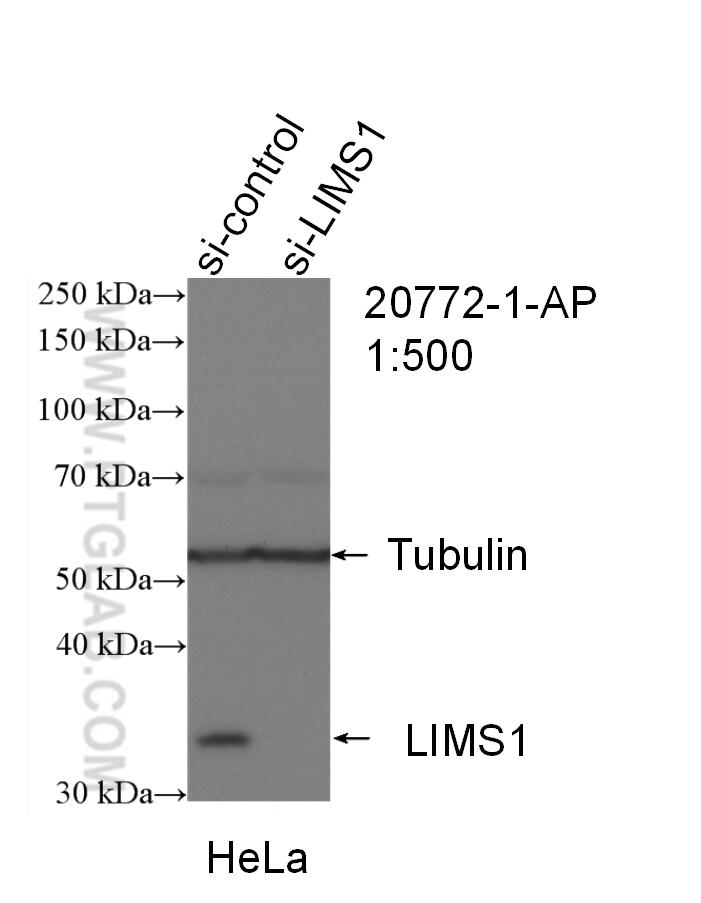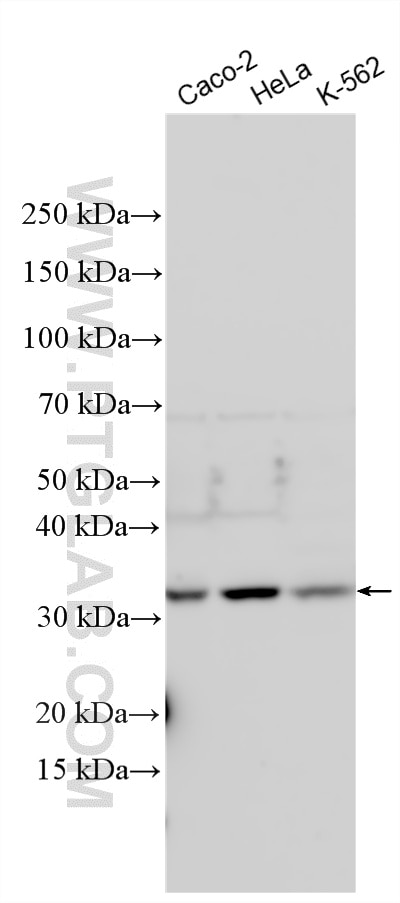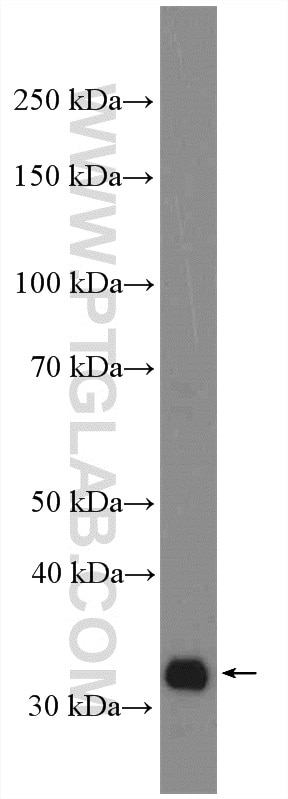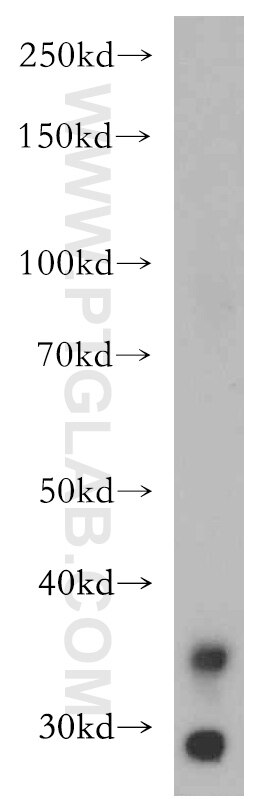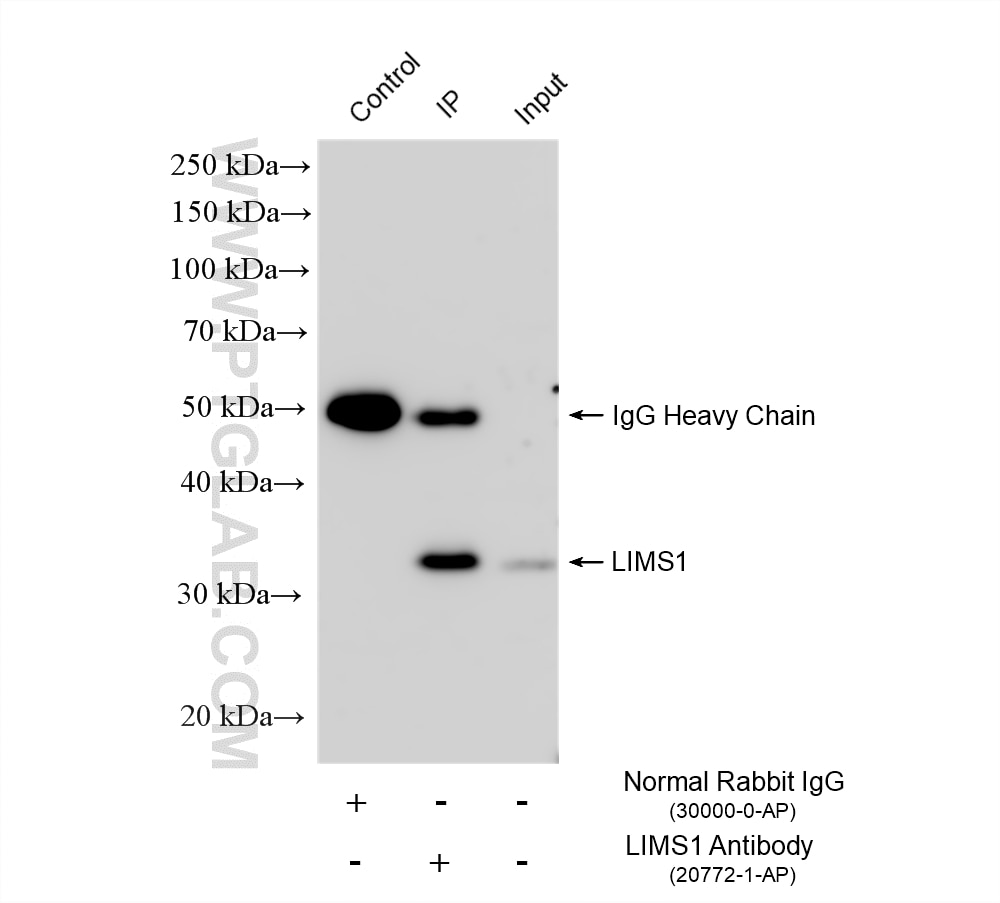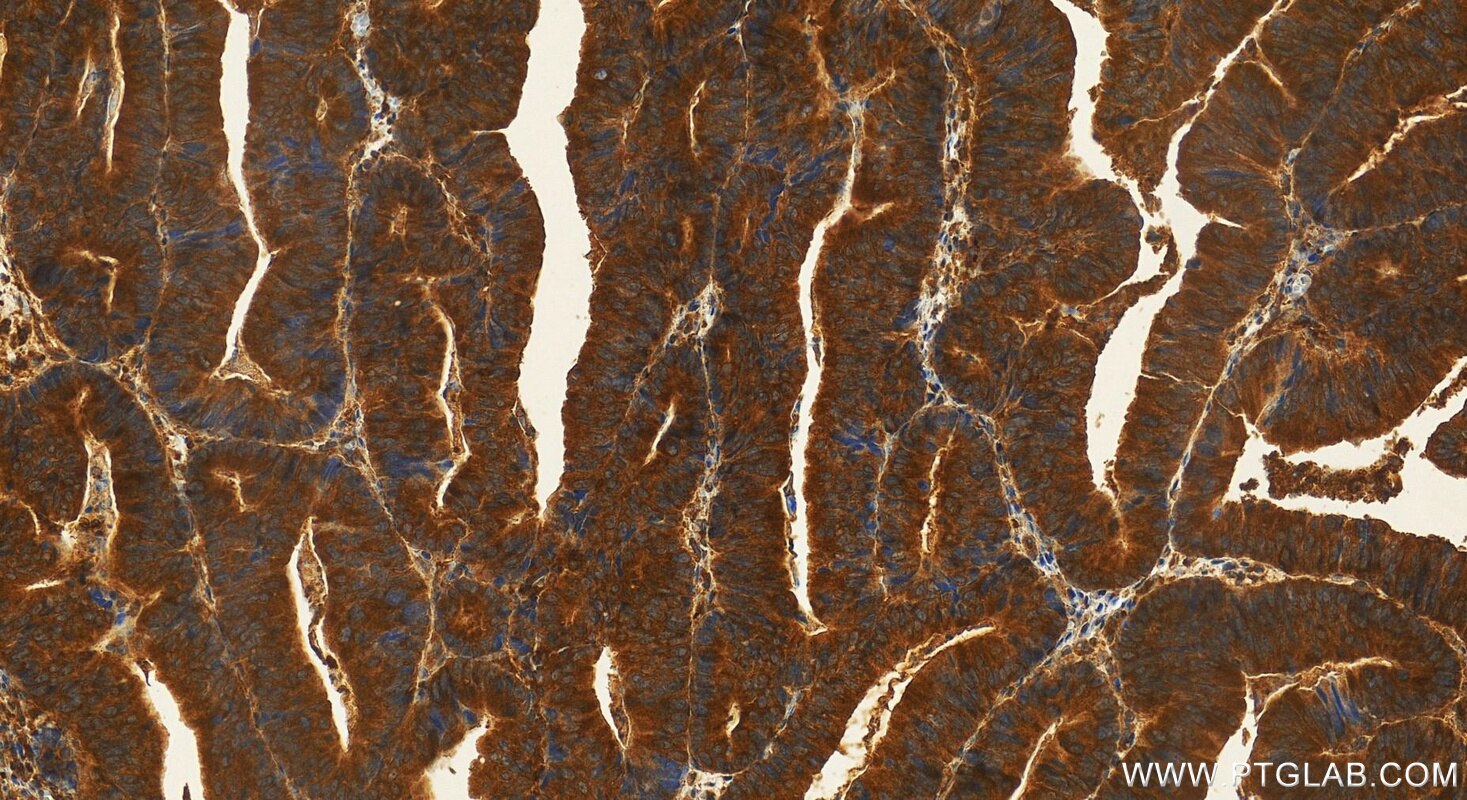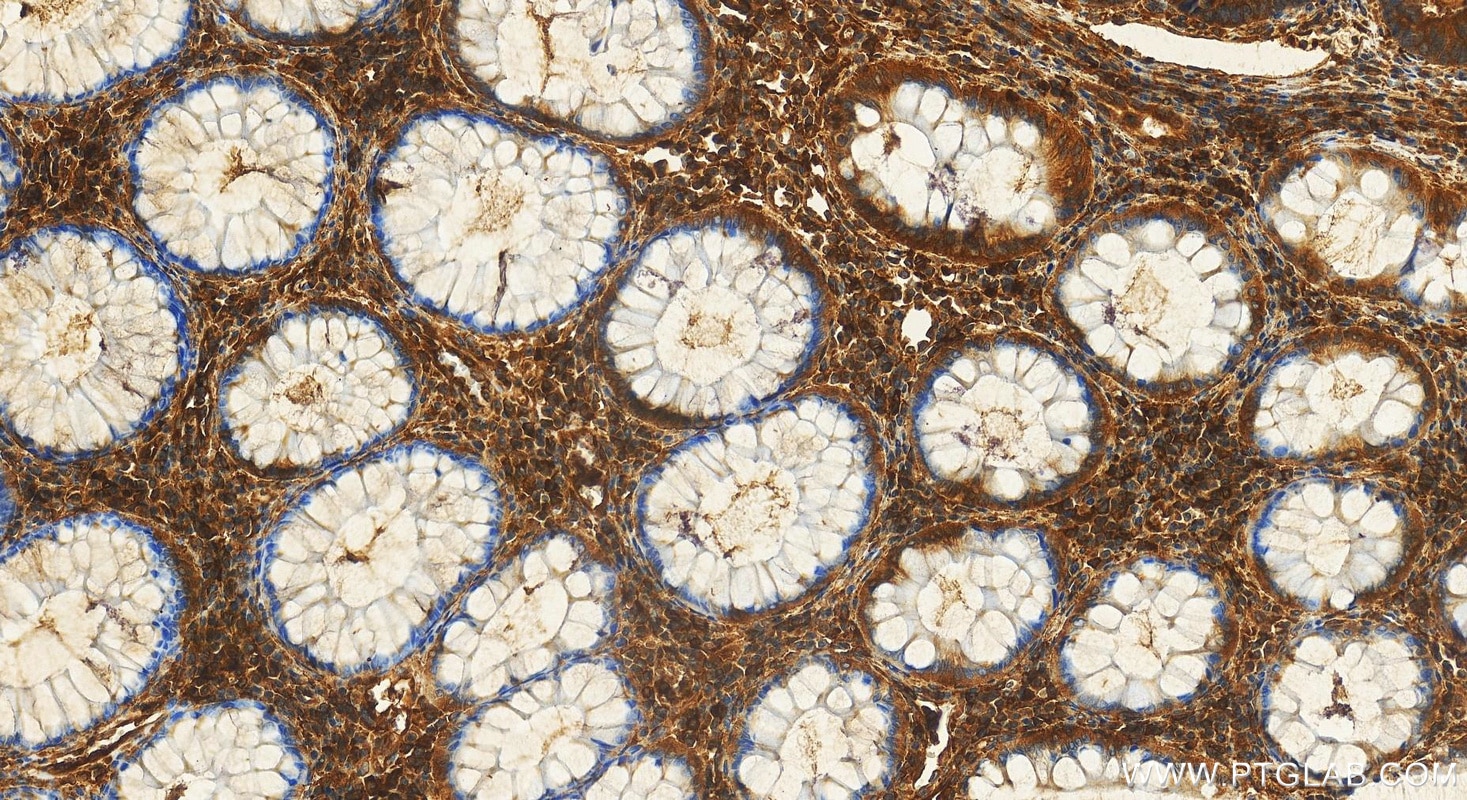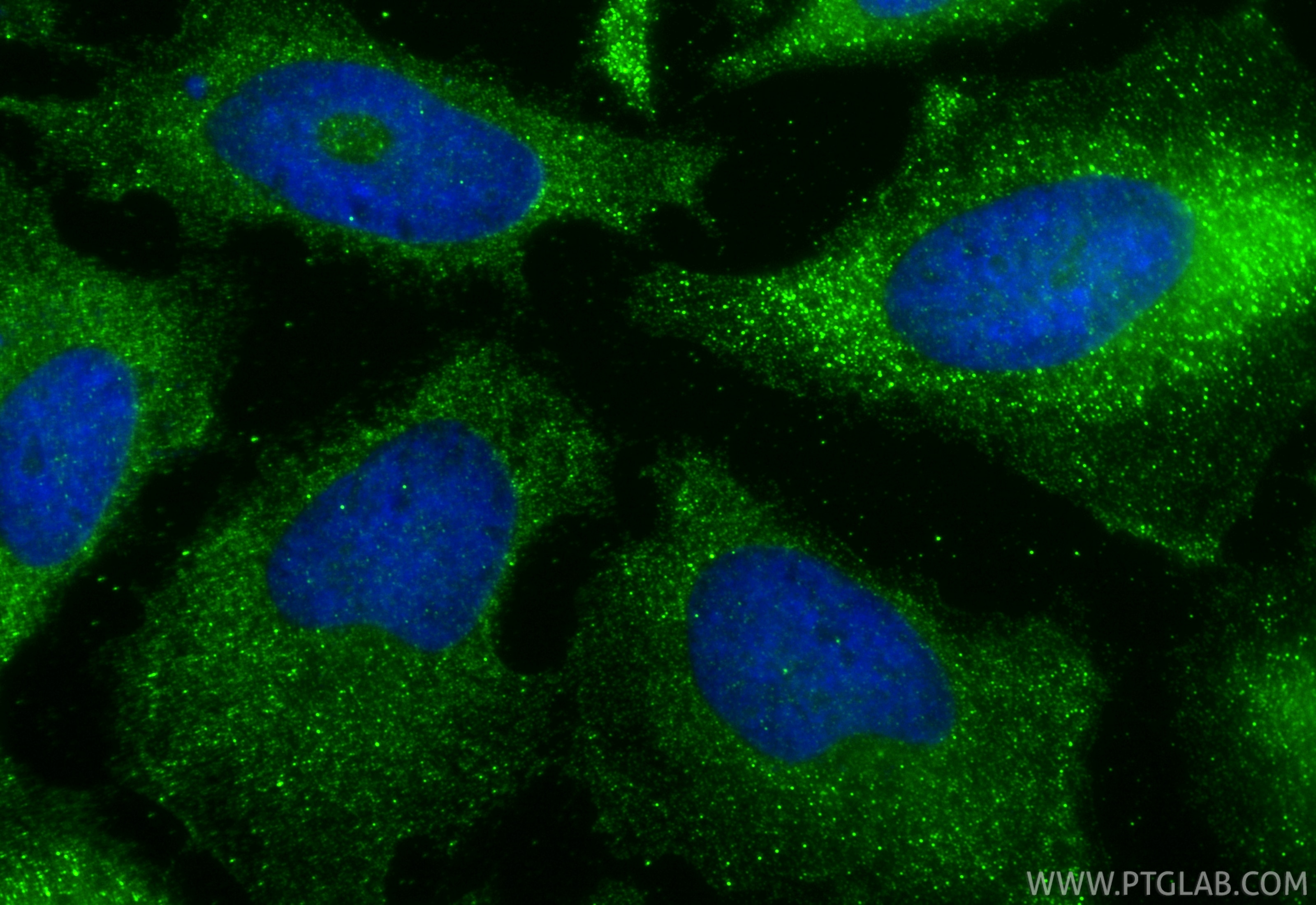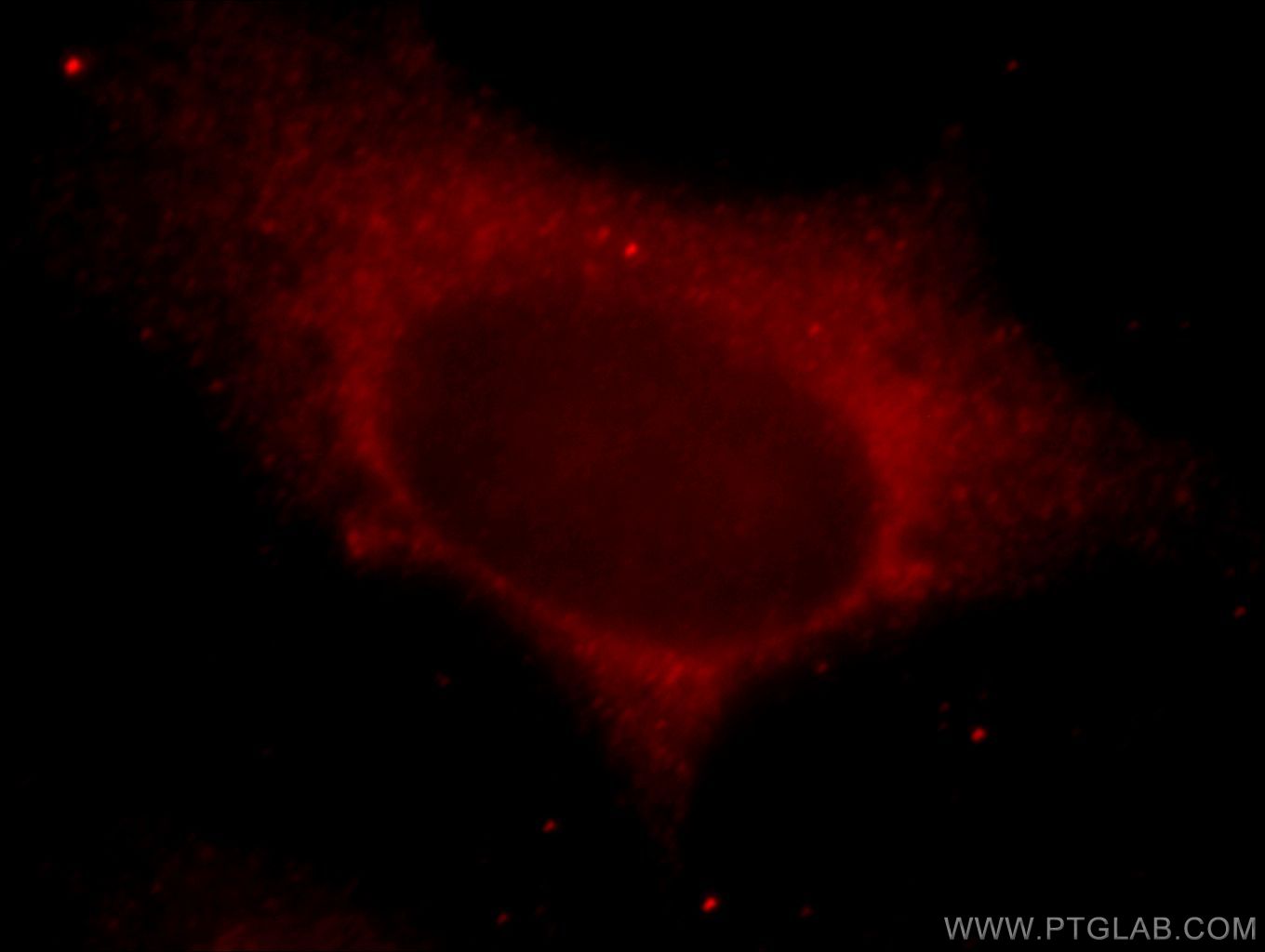Validation Data Gallery
Tested Applications
| Positive WB detected in | Caco-2 cells, human kidney tissue, HeLa cells, K-562 cells |
| Positive IP detected in | K-562 cells |
| Positive IHC detected in | human colon cancer tissue Note: suggested antigen retrieval with TE buffer pH 9.0; (*) Alternatively, antigen retrieval may be performed with citrate buffer pH 6.0 |
| Positive IF/ICC detected in | HeLa cells |
Recommended dilution
| Application | Dilution |
|---|---|
| Western Blot (WB) | WB : 1:500-1:2000 |
| Immunoprecipitation (IP) | IP : 0.5-4.0 ug for 1.0-3.0 mg of total protein lysate |
| Immunohistochemistry (IHC) | IHC : 1:50-1:500 |
| Immunofluorescence (IF)/ICC | IF/ICC : 1:50-1:500 |
| It is recommended that this reagent should be titrated in each testing system to obtain optimal results. | |
| Sample-dependent, Check data in validation data gallery. | |
Published Applications
| KD/KO | See 3 publications below |
| WB | See 6 publications below |
| IP | See 1 publications below |
Product Information
20772-1-AP targets LIMS1 in WB, IHC, IF/ICC, IP, ELISA applications and shows reactivity with human, mouse, rat samples.
| Tested Reactivity | human, mouse, rat |
| Cited Reactivity | human |
| Host / Isotype | Rabbit / IgG |
| Class | Polyclonal |
| Type | Antibody |
| Immunogen |
CatNo: Ag14764 Product name: Recombinant human LIMS1 protein Source: e coli.-derived, PGEX-4T Tag: GST Domain: 1-325 aa of BC005341 Sequence: MANALASATCERCKGGFAPAEKIVNSNGELYHEQCFVCAQCFQQFPEGLFYEFEGRKYCEHDFQMLFAPCCHQCGEFTIGRVIKAMNNSWHPECFRCDLCQEVLADIGFVKNAGRHLCRPCHNREKARGLGKYICQKCHAIIDEQPLIFKNDPYHPDHFNCANCGKELTADARELKGELYCLPCHDKMGVPICGACRRPIEGRVVNAMGKQWHVEHFVCAKCEKPFLGHRHYERKGLAYCETHYNQLFGDVCFHCNRVIEGGVVSALNKAWCVNCFACSTCNTKLTLKNKFVEFDMKPVCKKCYEKFPLELKKRLKKLAETLGRK 相同性解析による交差性が予測される生物種 |
| Full Name | LIM and senescent cell antigen-like domains 1 |
| Calculated molecular weight | 325 aa, 37 kDa |
| Observed molecular weight | 35-37 kDa |
| GenBank accession number | BC005341 |
| Gene Symbol | LIMS1 |
| Gene ID (NCBI) | 3987 |
| RRID | AB_10695765 |
| Conjugate | Unconjugated |
| Form | |
| Form | Liquid |
| Purification Method | Antigen affinity purification |
| UNIPROT ID | P48059 |
| Storage Buffer | PBS with 0.02% sodium azide and 50% glycerol{{ptg:BufferTemp}}7.3 |
| Storage Conditions | Store at -20°C. Stable for one year after shipment. Aliquoting is unnecessary for -20oC storage. |
Background Information
LIMS1, also known as PINCH1, is an adaptor protein that contains five LIM domains, or double zinc fingers(PMID: 7517666). PINCH-1 is a widely expressed focal adhesion protein that forms a ternary complex with integrin-linked kinase (ILK) and CH-ILKBP/actopaxin/alpha-parvin (PMID: 14551191). LIMS1 is involved in integrin signaling through its LIM domain-mediated interaction with integrin-linked kinase, found in focal adhesion plaques.
Protocols
| Product Specific Protocols | |
|---|---|
| IF protocol for LIMS1 antibody 20772-1-AP | Download protocol |
| IHC protocol for LIMS1 antibody 20772-1-AP | Download protocol |
| IP protocol for LIMS1 antibody 20772-1-AP | Download protocol |
| WB protocol for LIMS1 antibody 20772-1-AP | Download protocol |
| Standard Protocols | |
|---|---|
| Click here to view our Standard Protocols |
Publications
| Species | Application | Title |
|---|---|---|
Nat Commun PINCH-1 regulates mitochondrial dynamics to promote proline synthesis and tumor growth.
| ||
J Cell Biol A PINCH-1-Smurf1 signaling axis mediates mechano-regulation of BMPR2 and stem cell differentiation.
| ||
Theranostics PINCH-1 promotes IGF-1 receptor expression and skin cancer progression through inhibition of the GRB10-NEDD4 complex. | ||
J Cell Sci Differences in binding to the ILK complex determines kindlin isoform adhesion localization and integrin activation. | ||
Amino Acids PINCH-1 promotes Δ1-pyrroline-5-carboxylate synthase expression and contributes to proline metabolic reprogramming in lung adenocarcinoma.
| ||
Cancer Med The RNA-binding protein RBMS3 inhibits the progression of colon cancer by regulating the stability of LIMS1 mRNA |

